*NURSING > QUESTIONS & ANSWERS > NUR 634 FINAL EXAM-ALREADY GRADED A (All)
NUR 634 FINAL EXAM-ALREADY GRADED A
Document Content and Description Below
NUR-634 Final Exam Test Prep You are examining an elderly man and notice the following: Decreased vibration sense in the feet and ankles, diminished gag reflex, right patellar reflex less than ... the left, and diminished abdominal reflexes. Which of these is abnormal? Decreased vibration sense Diminished gag reflex Diminished right patellar reflex compared to the left Diminished abdominal reflexes Question Points: 1.0 / 1.0 A 68-year-old retired farmer presents to your office for evaluation of a skin lesion. On the right temporal area of the forehead, you see a flattened papule the same color as his skin, covered by a dry scale that is round and feels hard. He has several more of these scattered on the forehead, arms, and legs. Based on this description, what is your most likely diagnosis? Actinic keratosis Seborrheic keratosis Basal cell carcinoma Squamous cell carcinoma Question Points: 1.0 / 1.0 A 14-year-old junior high school student is brought in by his mother and father because he seems to be developing breasts. The mother is upset because she read on the Internet that smoking marijuana leads to breast enlargement in males. The young man adamantly denies using any tobacco, alcohol, or drugs. He has recently noticed changes in his penis, testicles, and pubic hair pattern. Otherwise, his past medical history is unremarkable. His parents are both in good health. He has two older brothers who never had this problem. On examination, you see a mildly overweight teenager with enlarged breast tissue that is slightly tender on both sides. Otherwise his examination is normal. He is agreeable to taking a drug test. What is the most likely cause of his gynecomastia? Breast cancer Imbalance of hormones of puberty Drug use Alcohol use Question Points: 1.0 / 1.0 A 17-year-old female presents to your office, complaining of a clear discharge from her right breast for 2 months. She states that she noticed it when she and her boyfriend were “messing around” and he squeezed her nipple. She continues to have this discharge anytime she squeezes that nipple. She denies any trauma to her breasts. Her past medical history is unremarkable. She denies any pregnancies. Both of her parents are healthy. She denies using tobacco or illegal drugs and drinks three to four beers a week. On examination, her breasts are symmetric with no skin changes. You are able to express clear discharge from her right nipple. You feel no discrete masses and her axillae are normal. The remainder of her heart, lung, abdominal, and pelvic examinations are unremarkable. A urine pregnancy test is negative. What cause of nipple discharge is the most likely in her circumstance? Benign breast abnormality Breast cancer Nonpuerperal galactorrhea Pagets disease Question Points: 1.0 / 1.0 A 26-year-old flight attendant presents in for a third trimester prenatal visit. She has had prenatal care since her sixth week of pregnancy. She has no complaints today and her prenatal course has been unremarkable. Today her blood pressure and weight gain are appropriate, and her urine is unremarkable. You have a first-year medical student shadowing you, so you ask the student to get Doptones and measure the patient's uterus in centimeters. The nurse practitioner student promptly reports fetal heart tones of 140, but he is having difficulty obtaining the correct measurement. He knows one end of the tape goes over the uterine fundus. From what inferior anatomic position should the tape be placed? Vagina Clitoris Pubic symphysis Umbilicus Question Points: 1.0 / 1.0 A 58-year-old gardener presents to your office for evaluation of a new lesion on her upper chest. The lesion appears to be “stuck on” and is oval, brown, and slightly elevated with a flat surface. It has a rough, wart like texture on palpation. Based on this description, what is your most likely diagnosis? Actinic keratosis Seborrheic keratosis Basal cell carcinoma Squamous cell carcinoma Question Points: 0.0 / 1.0 Which of the following represents age-related changes in the lungs? Decrease in chest wall compliance Speed of expiration increases Increase in respiratory muscle strength Increased elastic recoil of lung tissue Question Points: 1.0 / 1.0 A 15-month-old is brought to you for a fever of 38.6 degrees Celsius and fussiness. The ear examination is as follows: external ear, normal appearance and no tenderness with manipulation; canal, normal diameter without evidence of inflammation; tympanic membrane, bulging, erythematous, and opaque. Insufflation is deferred due to pain. What is the most likely condition here? Otitis externa Cholesteatoma Ruptured tympanic membrane Otitis media [Show More]
Last updated: 1 year ago
Preview 1 out of 37 pages
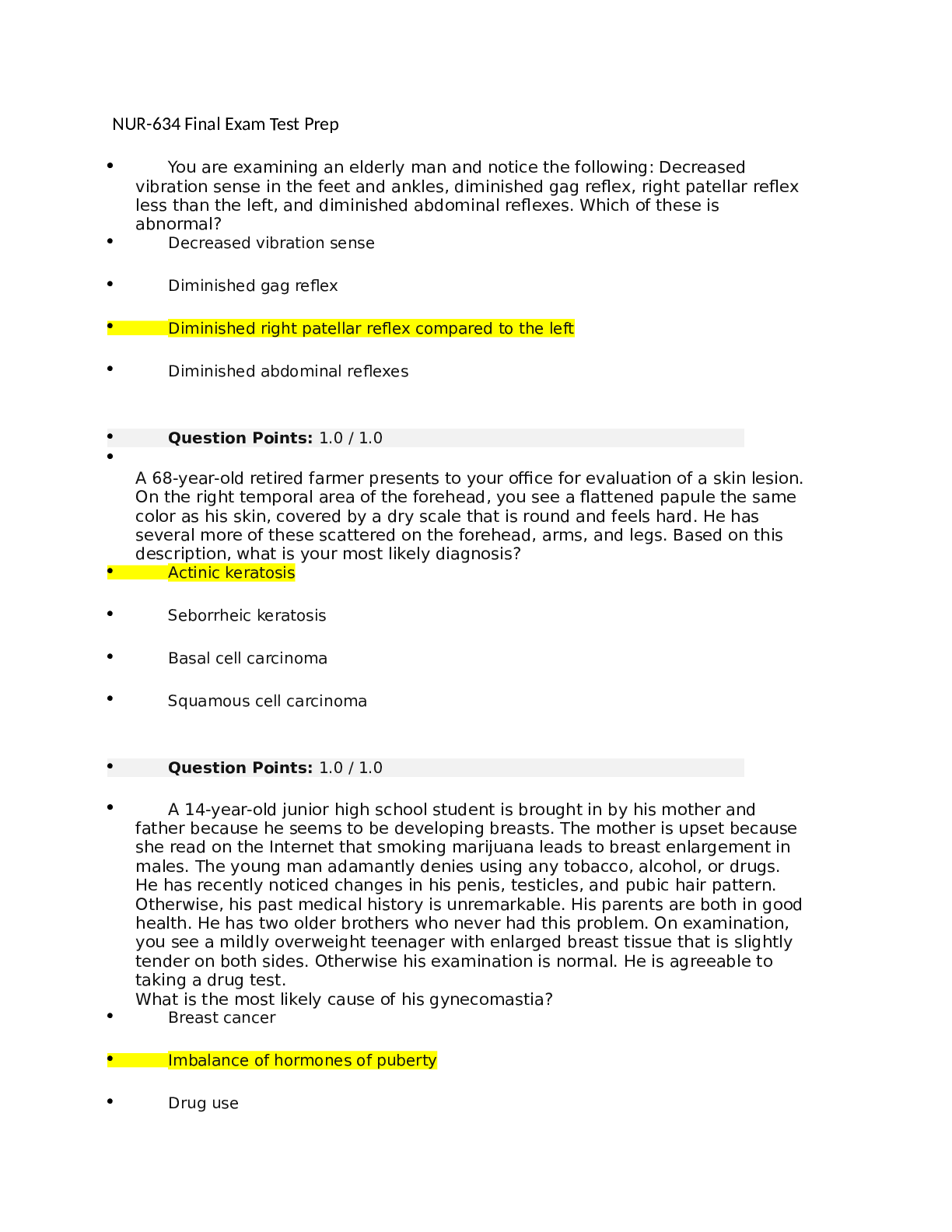
Reviews( 0 )
Document information
Connected school, study & course
About the document
Uploaded On
May 18, 2022
Number of pages
37
Written in
Additional information
This document has been written for:
Uploaded
May 18, 2022
Downloads
0
Views
36

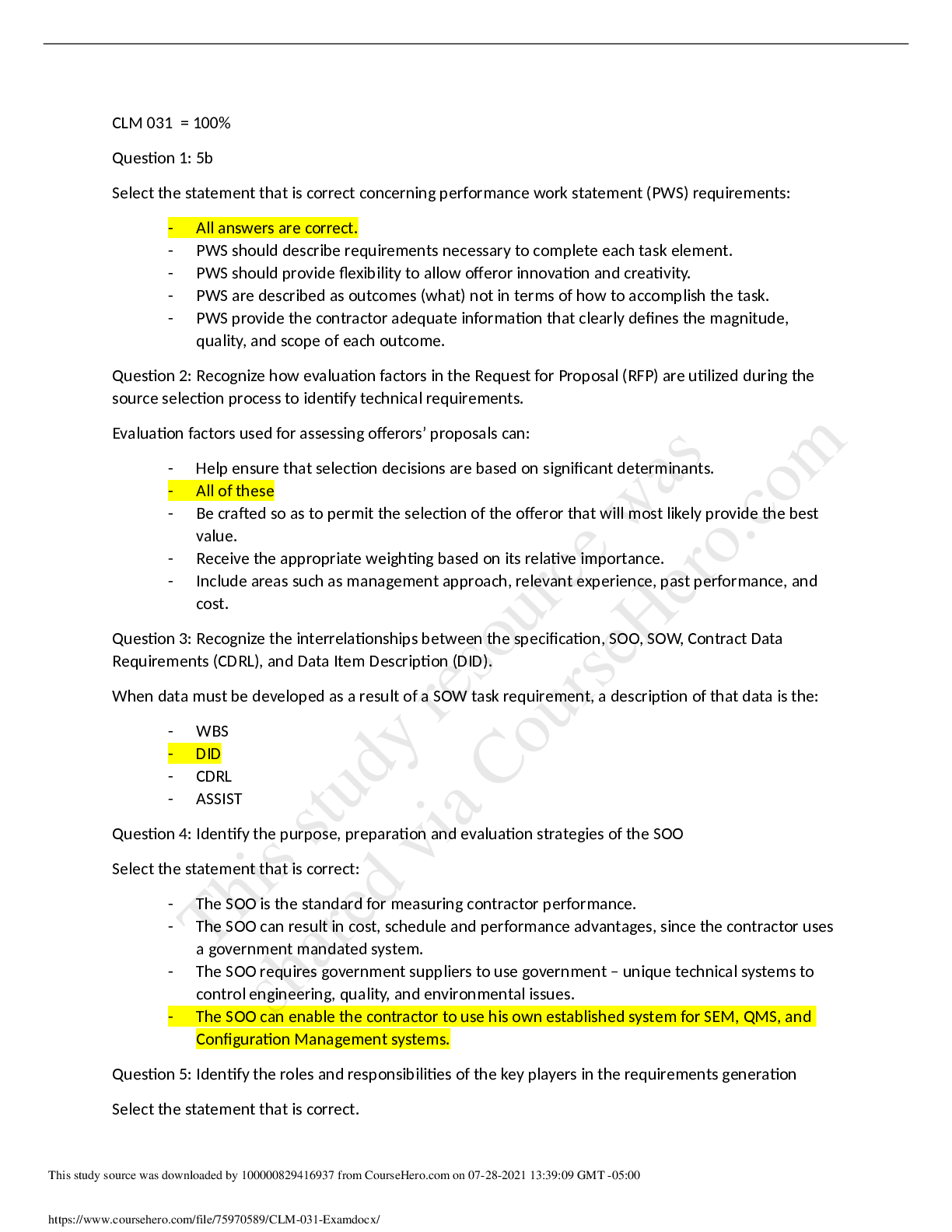

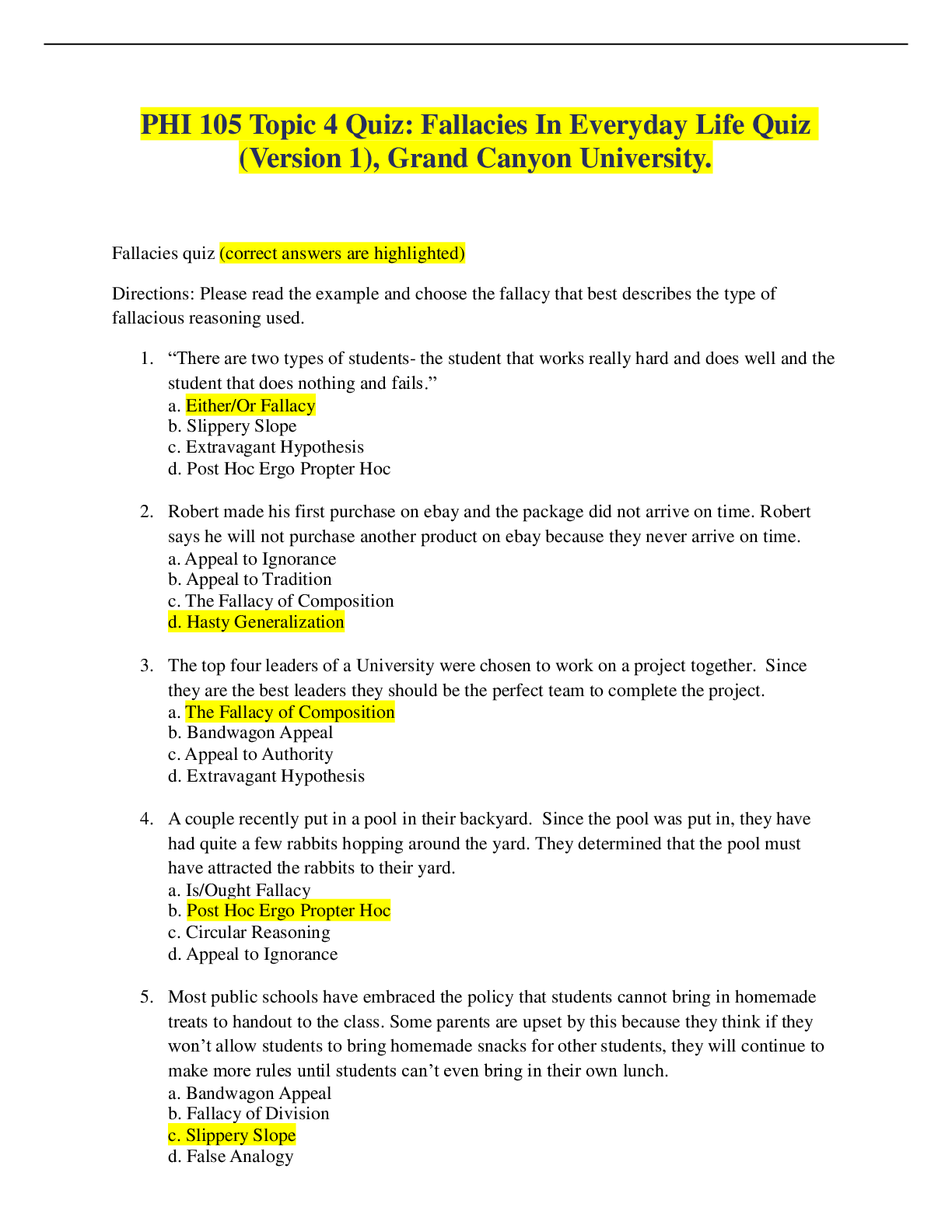
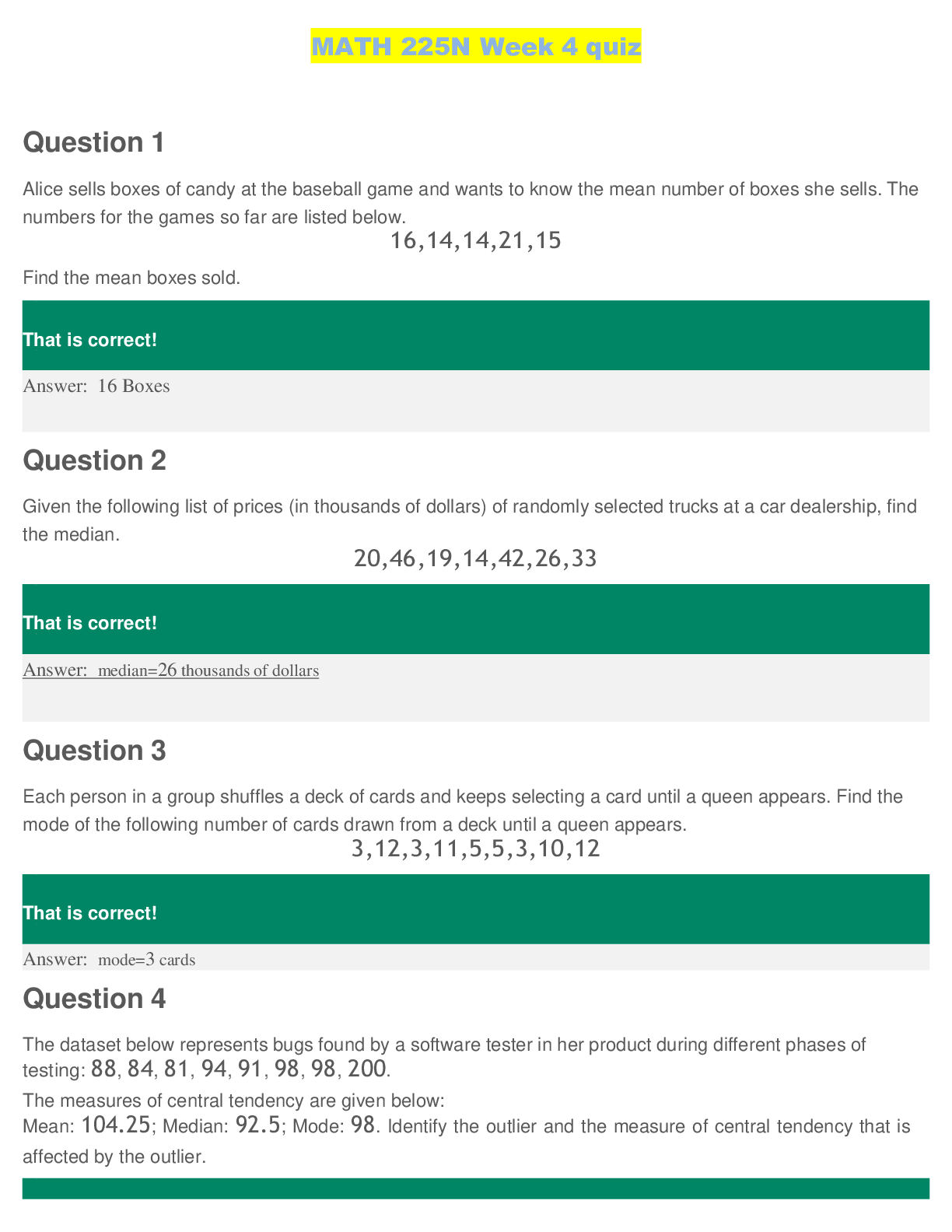
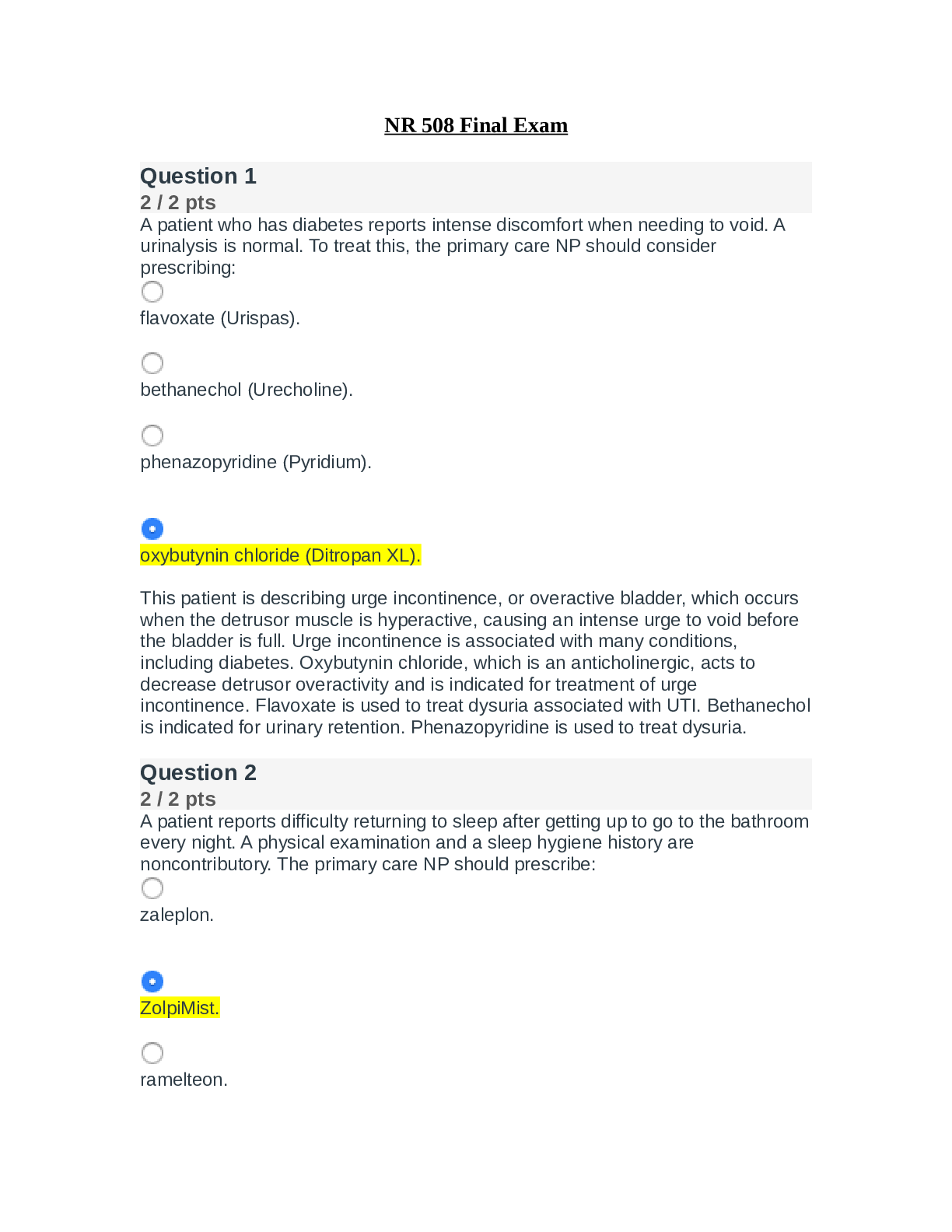
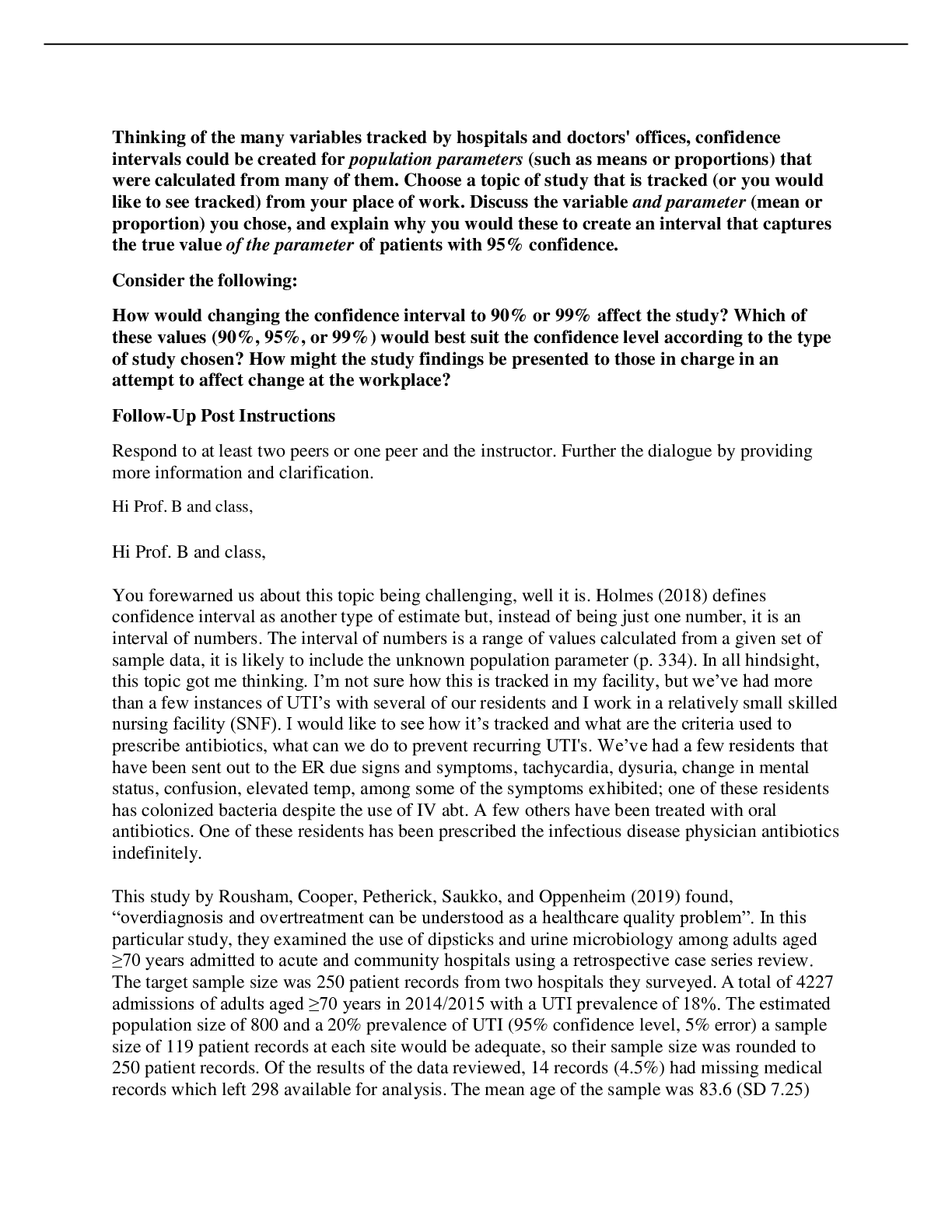

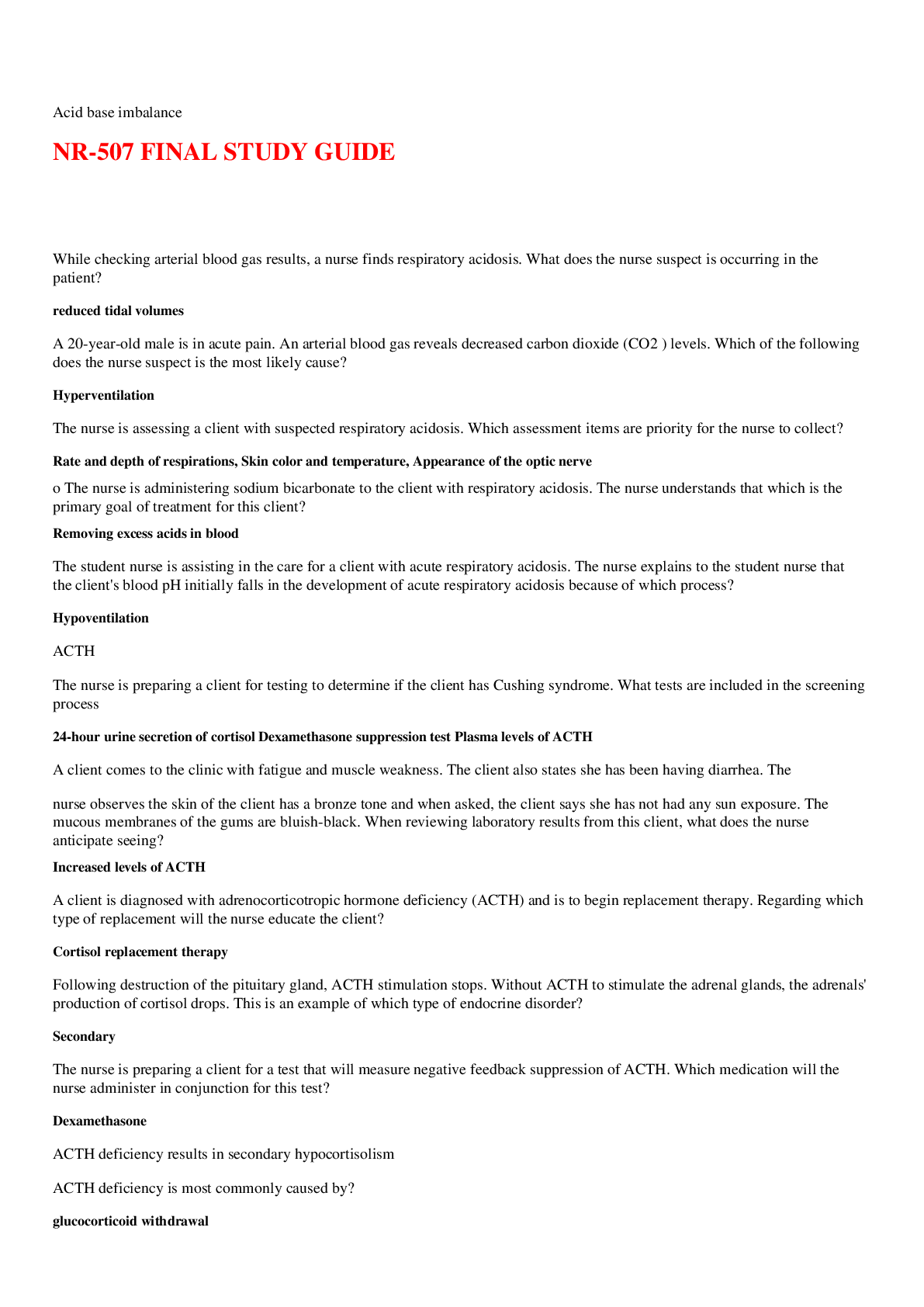
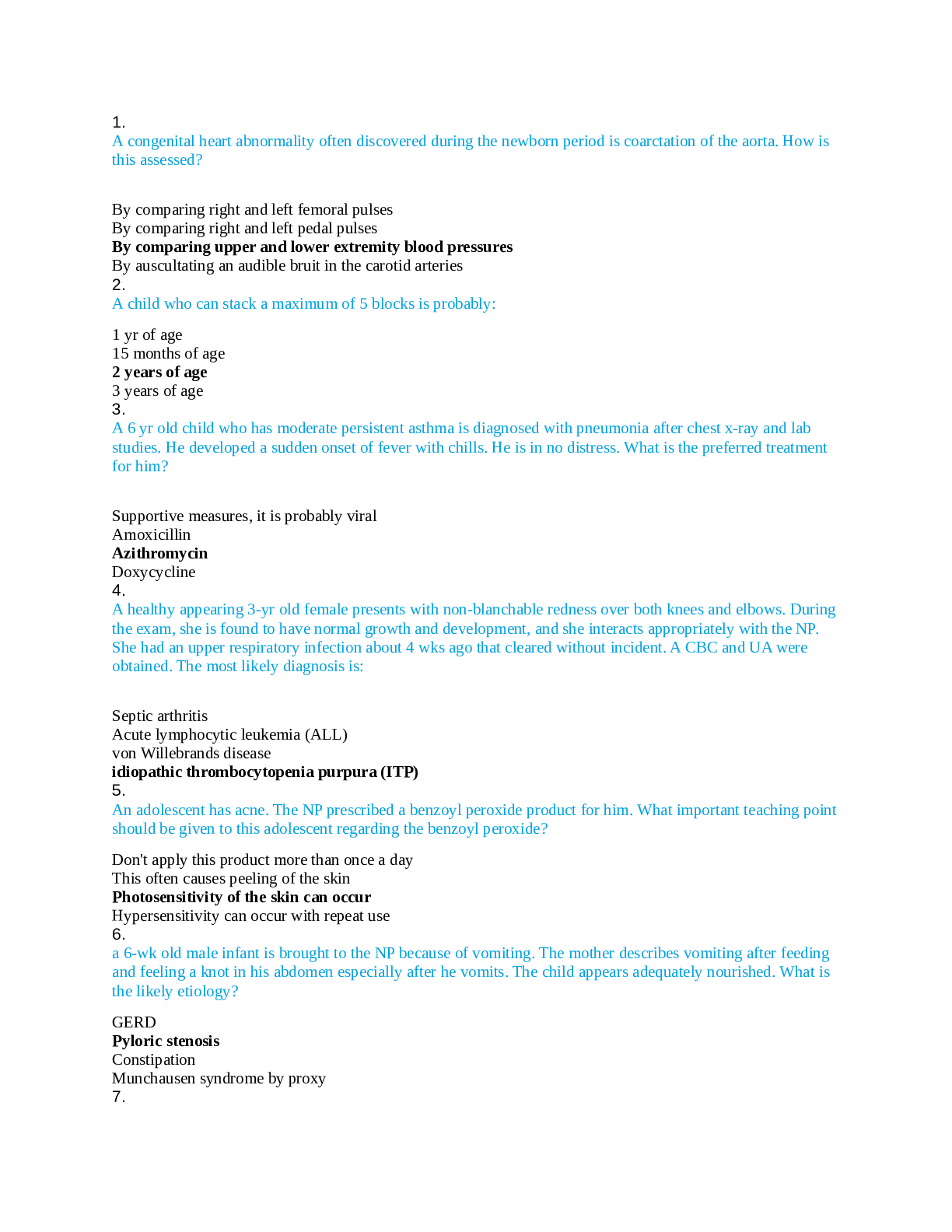
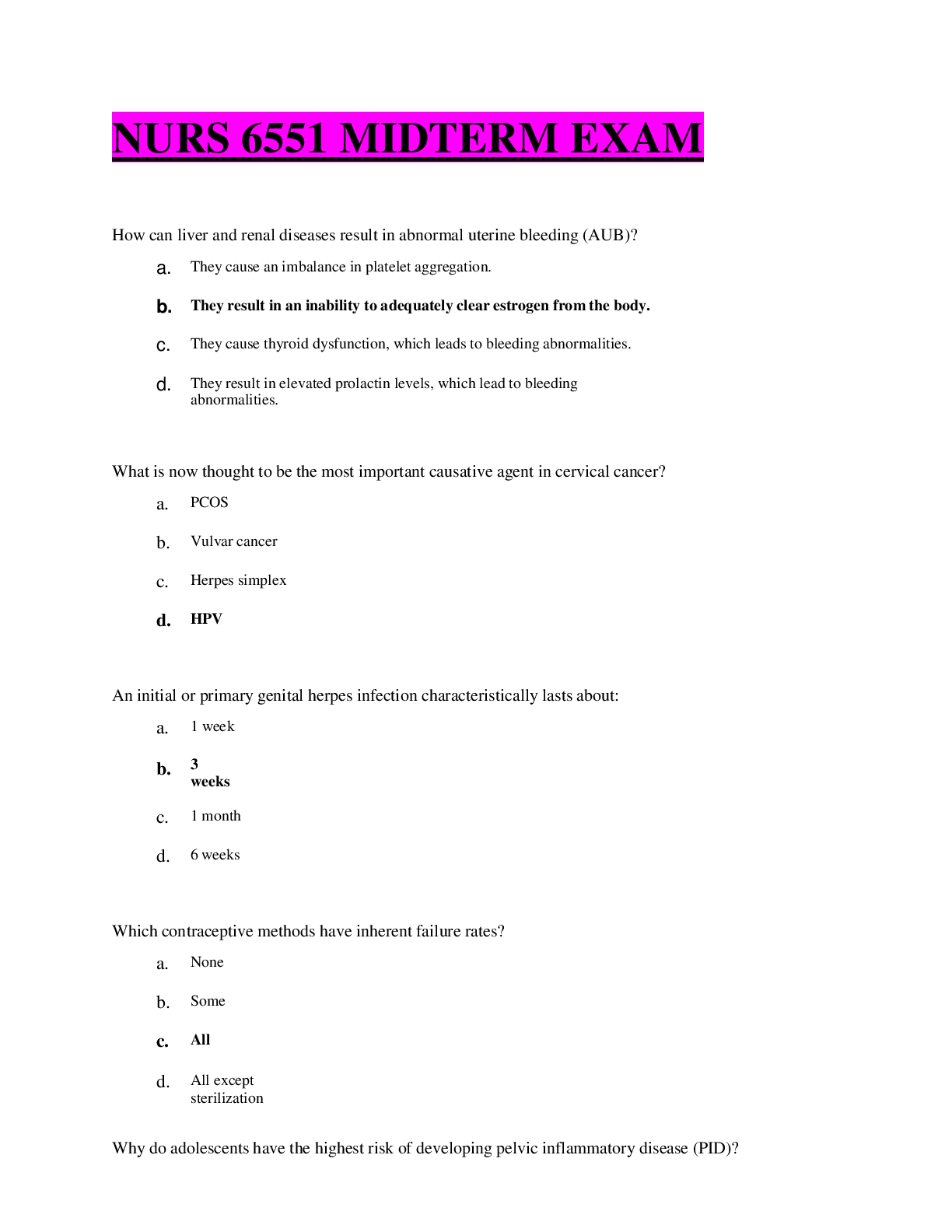
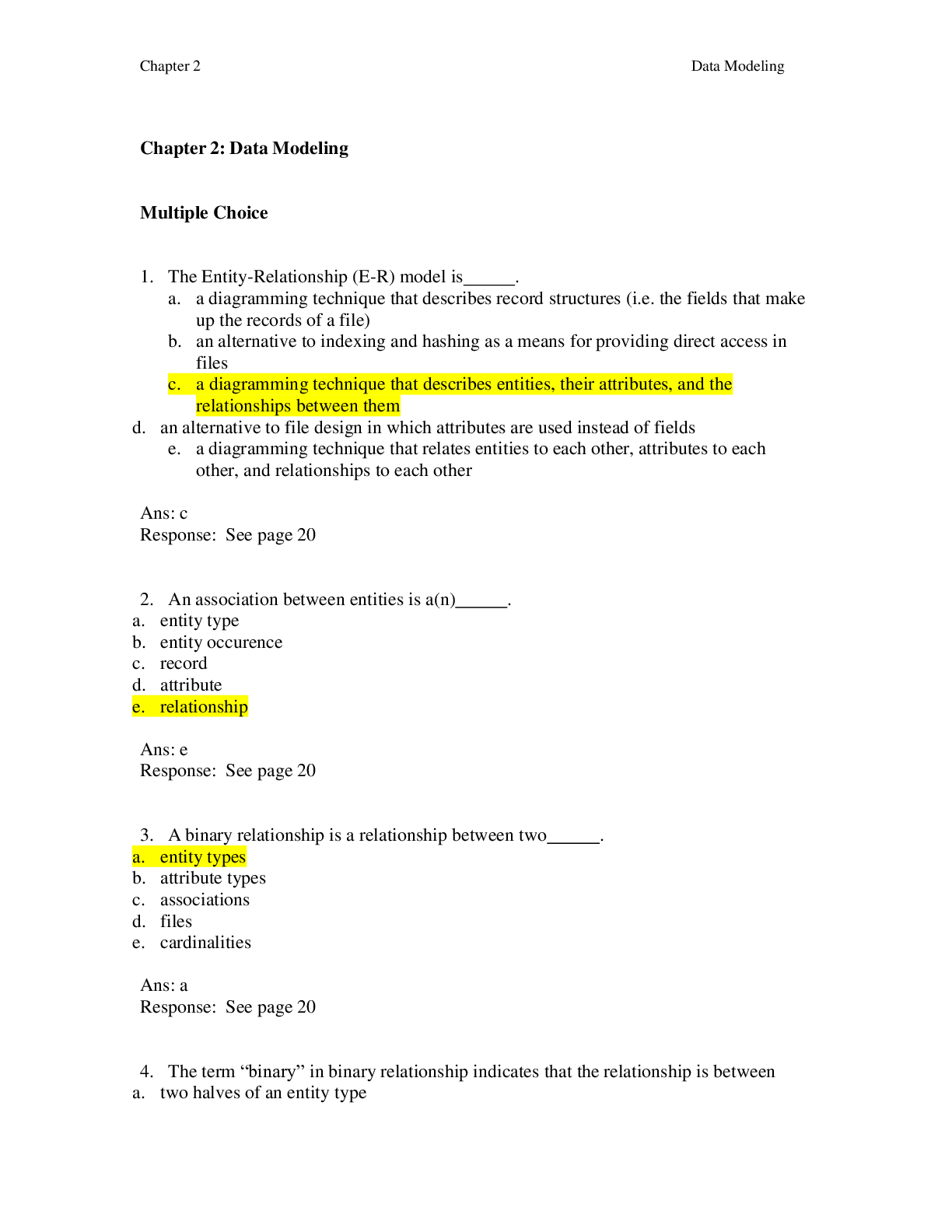
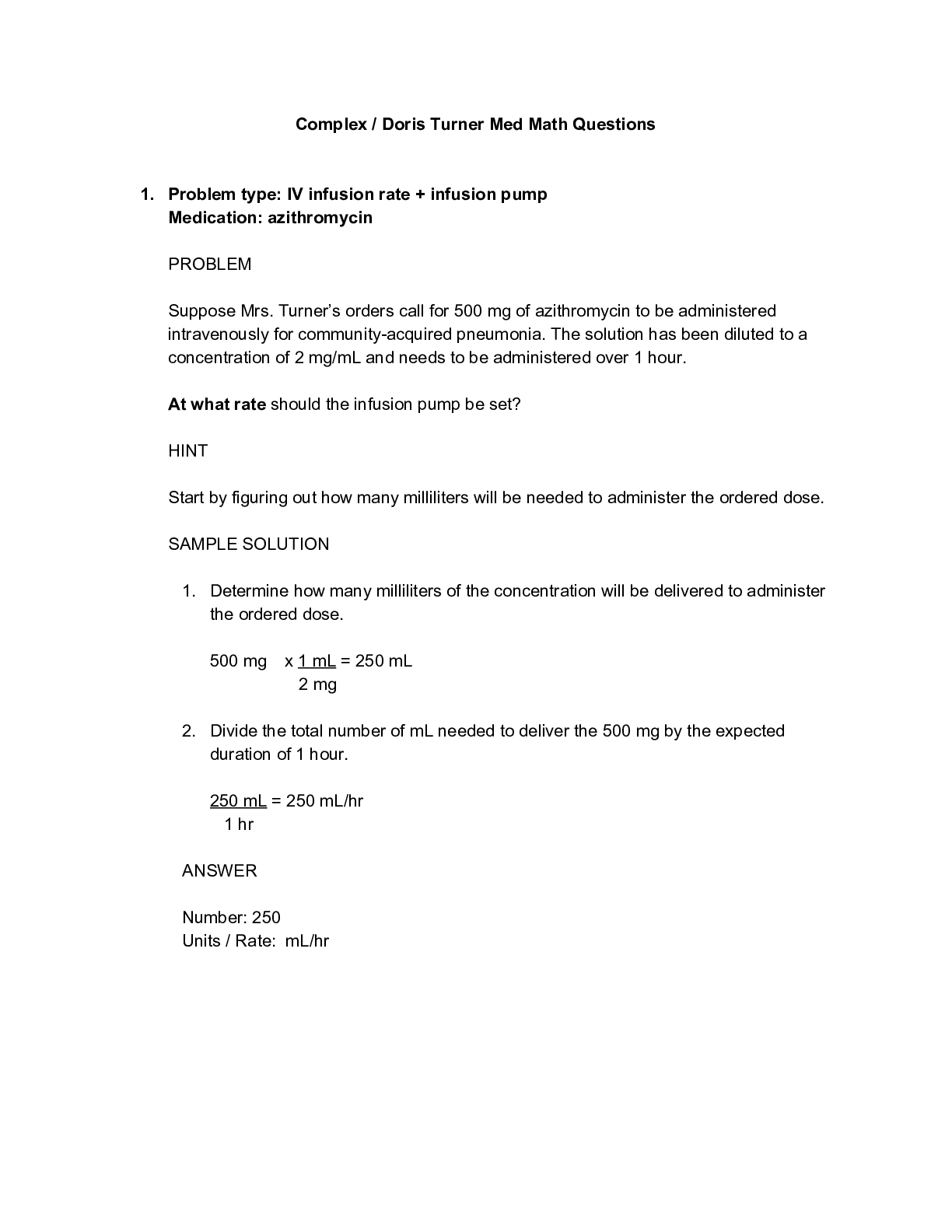

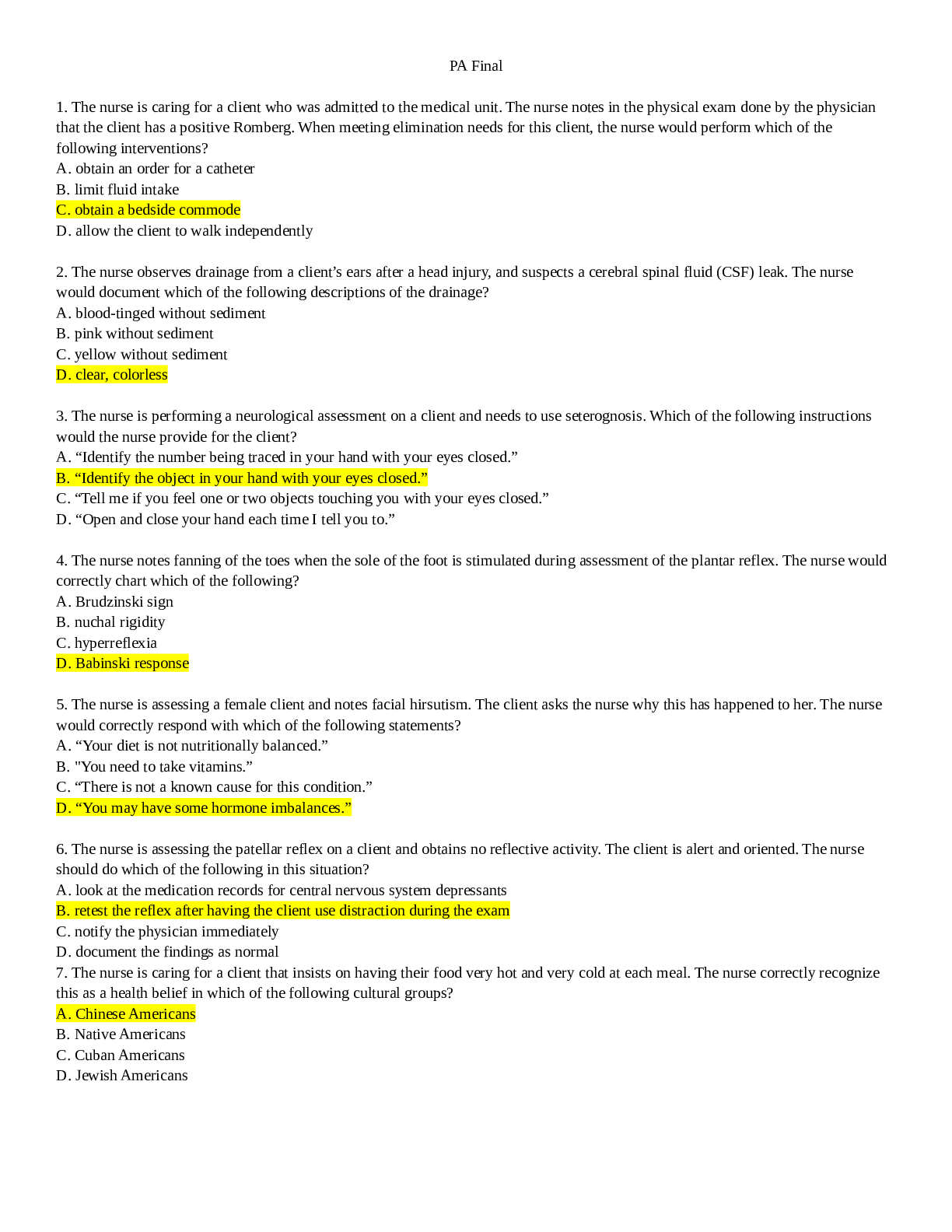
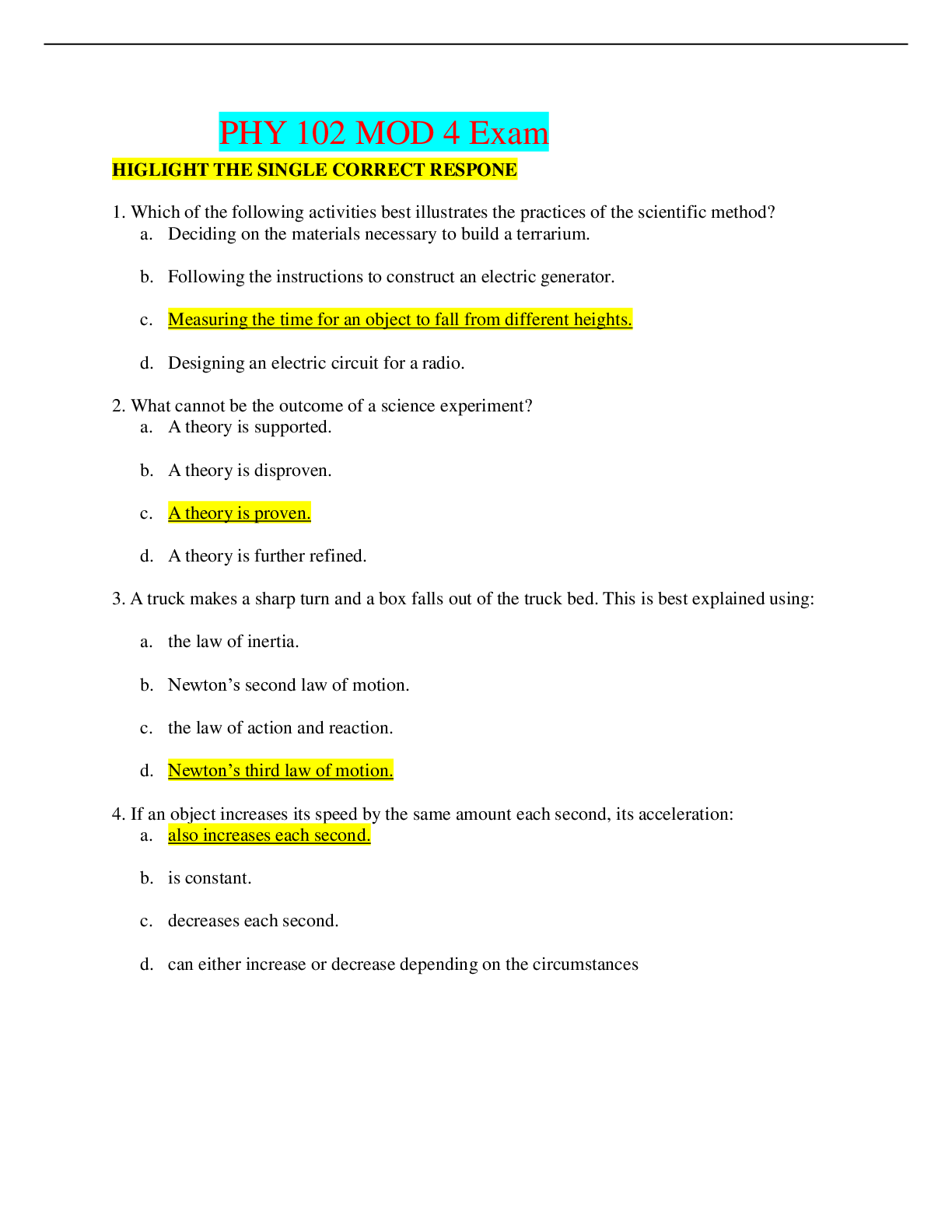



.png)

.png)

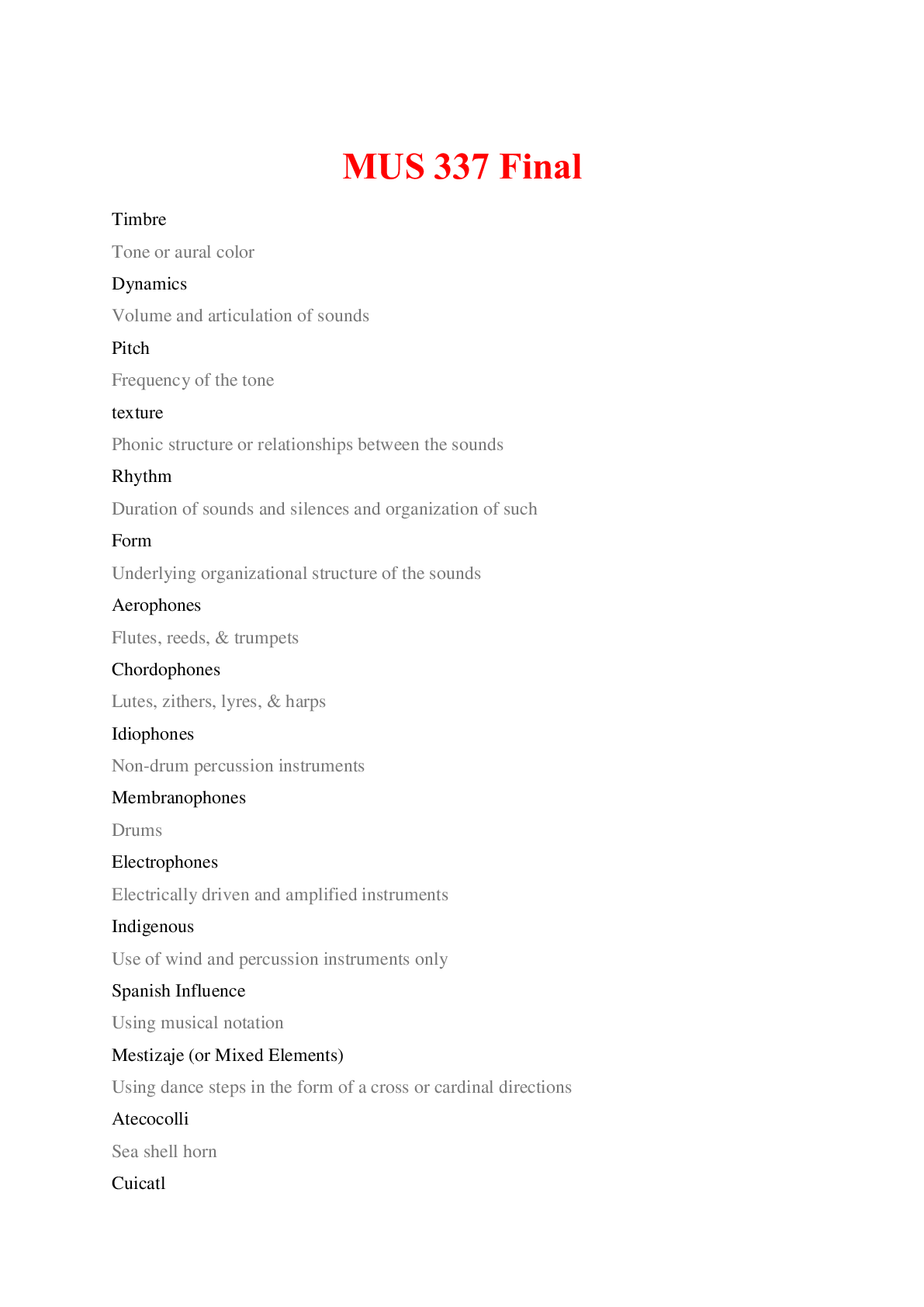

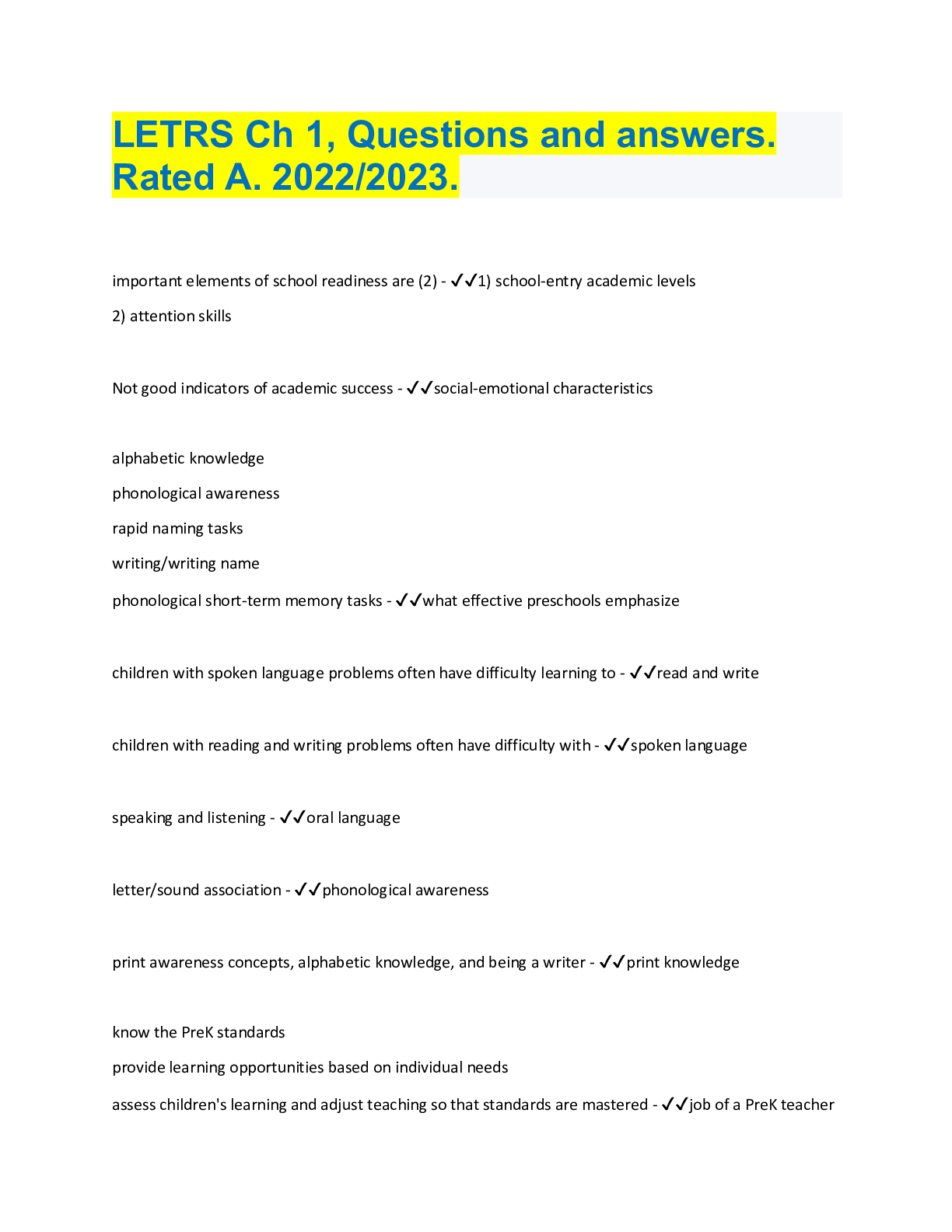
.png)
.png)

.png)




.png)
.png)

